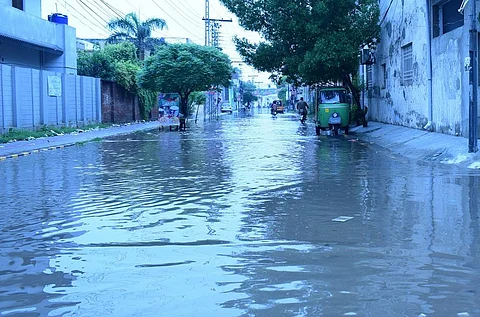

Catastrophic flooding in Pakistan, especially in the past week, has brought back memories for the people of a similar event in 2010.
Climatic phenomenon responsible for both the disasters may also have been similar and global warming could have played a significant role in both.
The floods have killed more than 1,000 people, affected more than 33 million since mid-June in 2022 and inundated almost one-third of the country.
“The Pakistani people are facing a monsoon on steroids — the relentless impact of epochal levels of rain and flooding,” said the United Nations Secretary-General António Guterres in an address as part of the UN’s flash appeal for flood victims August 30, 2022.
The UN is issuing a flash appeal for $160 million to support the response, led by the Government of Pakistan. These funds will provide 5.2 million people with food, water, sanitation, emergency education, protection and health support, he announced.
The situation in August was the worst since the beginning of the season in June.
Sindh and Balochistan provinces of the country, which have been the most affected by the floods, have received more rainfall than the historical normal in August, according to data from the Pakistan Meteorological Department (PMD).
Some 75 per cent of the 73 flood-affected districts fall in these two provinces, according to the Internal Displacement Monitoring Centre (IDMC), an international non-profit based in Geneva.
During August 1-30, the number of rainy days in all 18 districts of Sindh province was between 10 and 17. The historical average of these provinces is between 0.5 and 3.6.
The highest daily rainfall records broke in at least four districts of Sindh. The highest daily rainfall of 355 millimetres (mm) occurred in Padidan district August 19. The previous daily rainfall record for the district was 238 mm.
Wheat harvest in Sindh was already down by 20 per cent due to the heatwave in April, according to the IDMC.
“Sindh accounts for nearly a quarter of the country’s agricultural output. So, the already reduced harvest coupled with more than 2.5 million acres of crops now flooded can significantly affect food security in Pakistan,” said Kathryn Giffin, IDMC’s monitoring expert for Pakistan.
In the same period in Balochistan province, there have been more than the historical average number of rainy days in at least 12 of the 16 districts. Daily rainfall records broke in five of the districts.
Initial assessments in Balochistan have indicated a decrease in food consumption as crops and pre-existing food stocks have been destroyed by flood water.
Some 500,000 of the more than 735,000 livestock that perished nationwide were in Balochistan, according to IDMC.
“Communities in this province rely heavily on livestock for both sustenance and livelihoods. This loss, together with the destruction of crops and food stocks, could push families already facing crisis further into poverty and increase food insecurity,” said Giffin.
The PMD had predicted floods in its seasonal forecast for the monsoon season from July to September, issued June 6, 2022.
“Possibility of extreme hydro-meteorological events over catchment areas cannot be ruled out. It may generate riverine floods in the major rivers,” it had warned.
It had also forecasted flash flooding in hilly areas, which would be aided by melting snow due to above-normal temperatures in the mountains. This is what eventually happened.
One of the reasons for the excessive rainfall is the continuation of the La Niña phenomenon in the equatorial Pacific Ocean for a record third year.
During a La Niña event, the sea surface temperatures in the equatorial Pacific Ocean go down, disrupting the trade winds above the sea surface. This disruption of the trade winds has ripple effects on weather around the world. It generally causes more intense monsoon rainfall in south Asia. A La Niña event was also active during the 2010 floods in Pakistan.
The 2010 floods cannot be explained by La Niña alone and various studies have attributed them to climate change.
A 2012 study published in the Journal of Hydro-meteorology found a connection between the extraordinarily heavy rainfall and an atmospheric blocking event spanning western Russia, Kazakhstan and China-Tibet.
The disturbance penetrated southward and established strong winds along the Himalayan foothills, which was also aided by moisture coming in from the Bay of Bengal.
The same event was also responsible for extensive heat waves in Russia. In 2022 heat waves affected China in July and August. It could have been related to an atmospheric blocking event that caused heat waves across five continents in July and early August.
The blocking event caused by a meandering Arctic Jet-stream is a direct consequence of enhanced warming in the Arctic region.
Heatwaves had also affected Pakistan from March to June. It would have induced faster melting of the glaciers in the mountain provinces of Pakistan and increased the flow of the rivers, priming them for intense flooding.
While the floods in 2010 happened when Earth was warmer by 0.7 degrees Celsius than the pre-industrial average. Those in 2022 occurred at warming of 1.1°C. Such devastating floods are touted to become more frequent as the planet gets warmer. At current emissions of greenhouse gases, the world is well on its way to a temperature rise of more than 2°C unless countries bring down emissions.